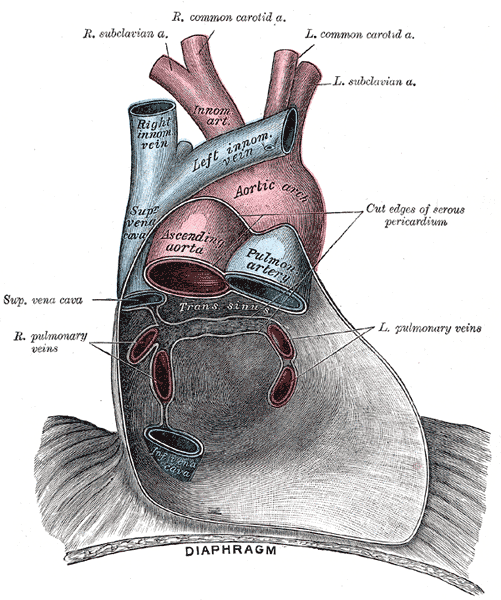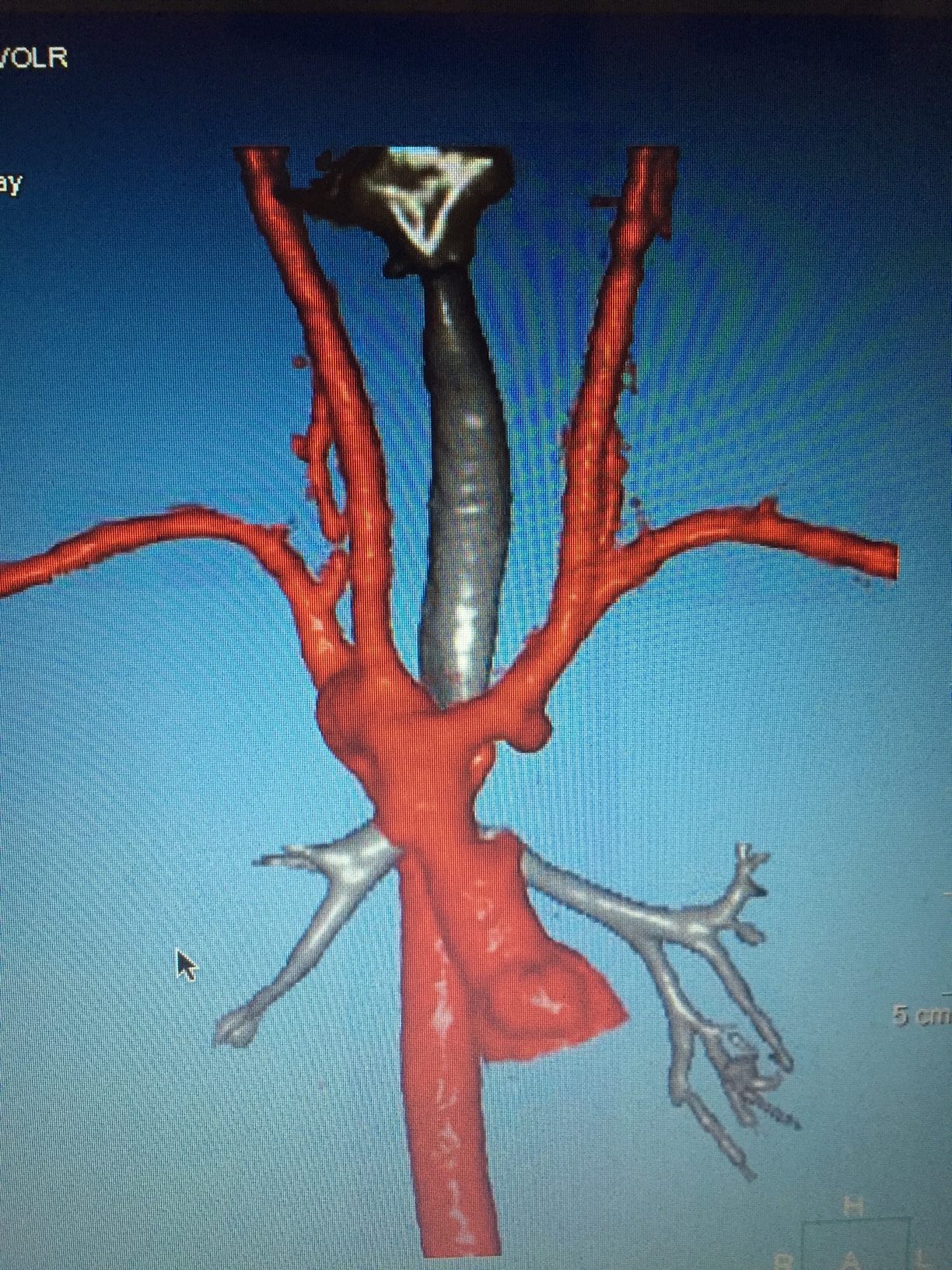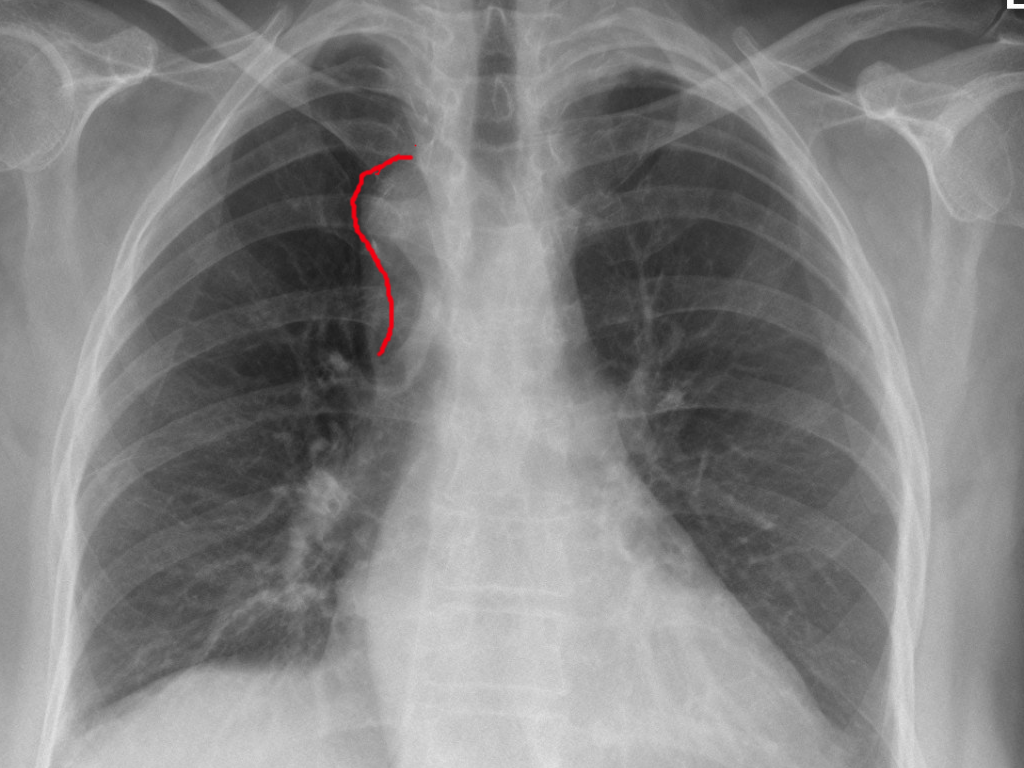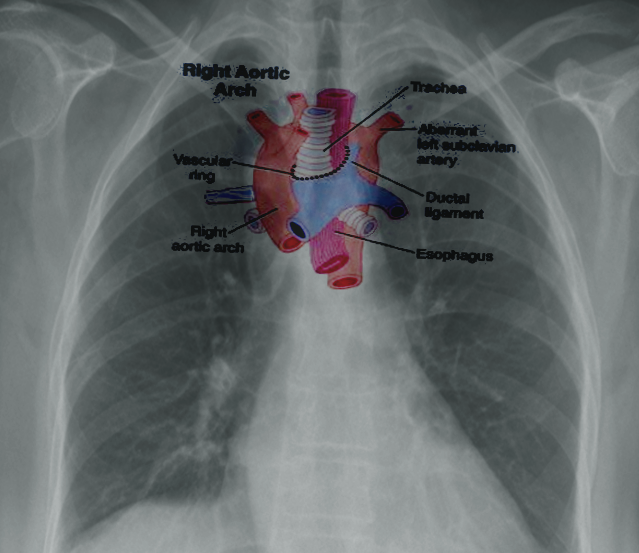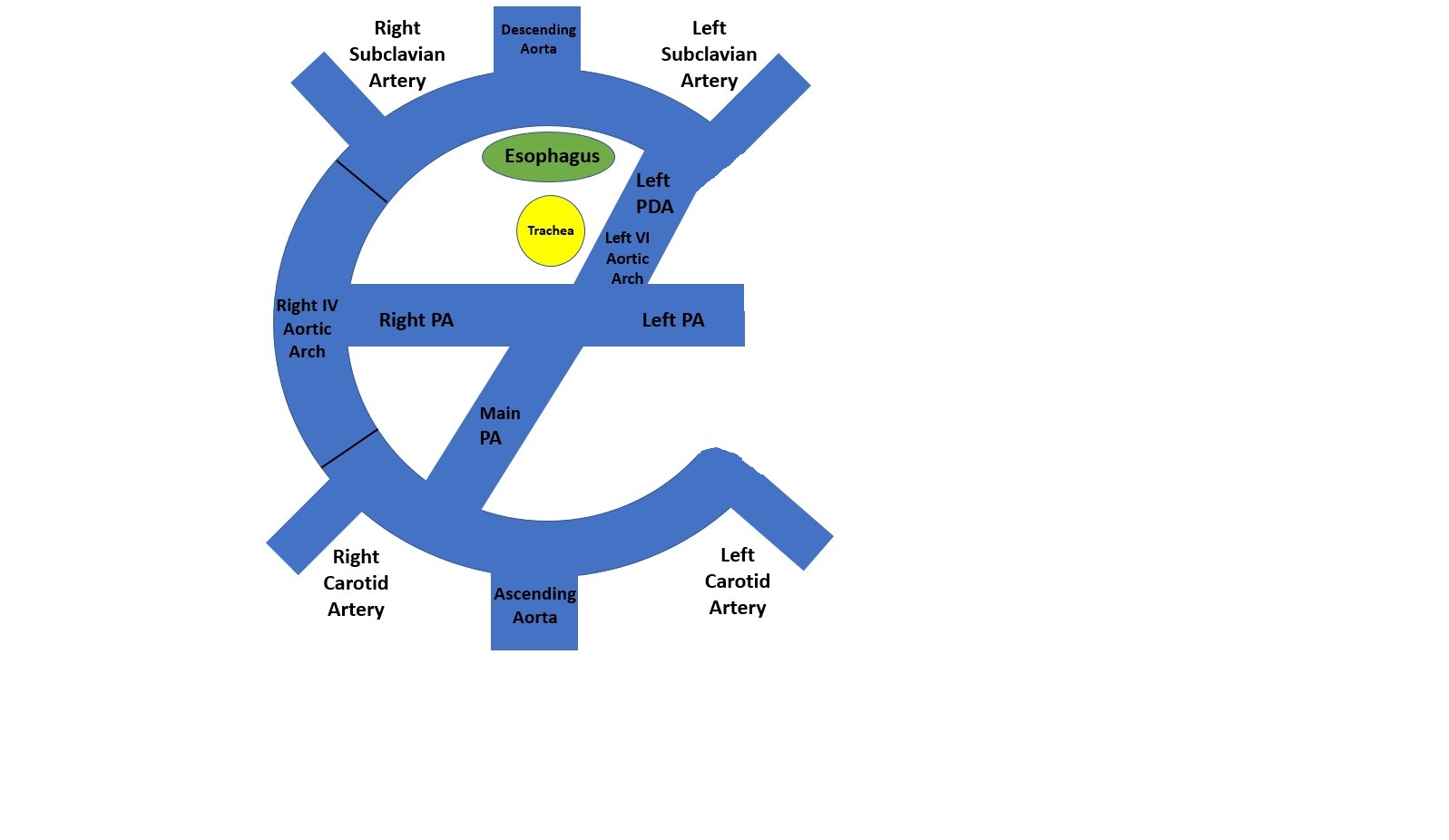[1]
McElhinney DB, Hoydu AK, Gaynor JW, Spray TL, Goldmuntz E, Weinberg PM. Patterns of right aortic arch and mirror-image branching of the brachiocephalic vessels without associated anomalies. Pediatric cardiology. 2001 Jul-Aug:22(4):285-91
[PubMed PMID: 11455394]
[2]
Evans WN, Acherman RJ, Berthoty D, Mayman GA, Ciccolo ML, Carrillo SA, Restrepo H. Right aortic arch with situs solitus. Congenital heart disease. 2018 Jul:13(4):624-627. doi: 10.1111/chd.12623. Epub 2018 Jul 22
[PubMed PMID: 30033669]
[3]
Stern SJ, Wadekar N, Mertens L, Manlhiot C, McCrindle BW, Jaeggi ET, Nield LE. The impact of not having a ductus arteriosus on clinical outcomes in foetuses diagnosed with tetralogy of Fallot. Cardiology in the young. 2015 Apr:25(4):684-92. doi: 10.1017/S1047951114000638. Epub 2014 Apr 28
[PubMed PMID: 24775715]
Level 2 (mid-level) evidence
[4]
Nakano K,Hayashi T,Ono H, Vascular ring associated with d-transposition of the great arteries: when should we suspect aortic arch anomalies? Cardiology in the young. 2018 Dec;
[PubMed PMID: 30221608]
[5]
Altun G, Babaoğlu K, Oğuz D, Dönmez M. Crossed pulmonary arteries associated with persistent truncus arteriosus and right aortic arch on the three-dimensional computed tomographic imaging. Anadolu kardiyoloji dergisi : AKD = the Anatolian journal of cardiology. 2013 Aug 5:13(5):E29. doi: 10.5152/akd.2013.164. Epub 2013 Aug 5
[PubMed PMID: 23728269]
[6]
Priya S, Thomas R, Nagpal P, Sharma A, Steigner M. Congenital anomalies of the aortic arch. Cardiovascular diagnosis and therapy. 2018 Apr:8(Suppl 1):S26-S44. doi: 10.21037/cdt.2017.10.15. Epub
[PubMed PMID: 29850417]
[7]
Goldbach A, Dass C, Surapaneni K. Aberrant Right Vertebral Artery with a Diverticulum of Kommerell: Review of a Rare Aortic Arch Anomaly. Journal of radiology case reports. 2018 May:12(5):19-26. doi: 10.3941/jrcr.v12i5.3239. Epub 2018 May 31
[PubMed PMID: 30651910]
Level 3 (low-level) evidence
[8]
Li S,Wen H,Liang M,Luo D,Qin Y,Liao Y,Ouyang S,Bi J,Tian X,Norwitz ER,Luo G, Congenital abnormalities of the aortic arch: revisiting the 1964 Stewart classification. Cardiovascular pathology : the official journal of the Society for Cardiovascular Pathology. 2018 Dec 6;
[PubMed PMID: 30623879]
Level 2 (mid-level) evidence
[9]
Qiu Y, Wu X, Zhuang Z, Li X, Zhu L, Huang C, Zhuang H, Ma M, Ye F, Chen J, Wu Z, Yu X, An M, Chen R, Chen J, Guan L, Sang H, Ye Y, Han Y, Chen Z, Qin H, Zhu H, Zhou Y, Zilundu PLM, Xu D, Zhou L. Anatomical variations of the aortic arch branches in a sample of Chinese cadavers: embryological basis and literature review. Interactive cardiovascular and thoracic surgery. 2019 Apr 1:28(4):622-628. doi: 10.1093/icvts/ivy296. Epub
[PubMed PMID: 30445440]
Level 2 (mid-level) evidence
[10]
Arakoni R, Merrill R, Simon EL. Foreign body sensation: A rare case of dysphagia lusoria in a healthy female. The American journal of emergency medicine. 2018 Nov:36(11):2134.e1-2134.e2. doi: 10.1016/j.ajem.2018.08.029. Epub 2018 Aug 8
[PubMed PMID: 30194019]
Level 3 (low-level) evidence
[11]
Ouedraogo AR, Boncoungou K, Maïga S, Ouedraogo G, Badoum G, Diallo O, Bonkoungou G, Nacanabo R, Ouedraogo M. [A case of malformation of aortic arches simulating asthma]. Revue de pneumologie clinique. 2018 Sep:74(4):253-256. doi: 10.1016/j.pneumo.2018.03.002. Epub 2018 Jul 17
[PubMed PMID: 30017752]
Level 3 (low-level) evidence
[12]
Muller CO,Derycke L,Kheniche A,Garcia G,Bernard S,Teissier N,Bonnard A, Routine multi detector computed tomography evaluation of tracheal impairment compared to laryngo-tracheal endoscopy in children with vascular ring. Pediatric surgery international. 2018 Aug;
[PubMed PMID: 29961107]
[13]
Slater BJ, Rothenberg SS. Thoracoscopic Management of Patent Ductus Arteriosus and Vascular Rings in Infants and Children. Journal of laparoendoscopic & advanced surgical techniques. Part A. 2016 Jan:26(1):66-9. doi: 10.1089/lap.2015.0126. Epub 2015 Aug 27
[PubMed PMID: 26312644]
[14]
Burke RP, Wernovsky G, van der Velde M, Hansen D, Castaneda AR. Video-assisted thoracoscopic surgery for congenital heart disease. The Journal of thoracic and cardiovascular surgery. 1995 Mar:109(3):499-507; discussion 508
[PubMed PMID: 7877311]
[15]
Bidar E, Arrigoni SC, Accord RE. Resection of Kommerell Diverticulum and Reimplantation of Aberrant Left Subclavian Artery in Right Aortic Arch Vascular Ring. Seminars in thoracic and cardiovascular surgery. 2019 Autumn:31(3):561-563. doi: 10.1053/j.semtcvs.2018.11.015. Epub 2018 Dec 7
[PubMed PMID: 30529160]

